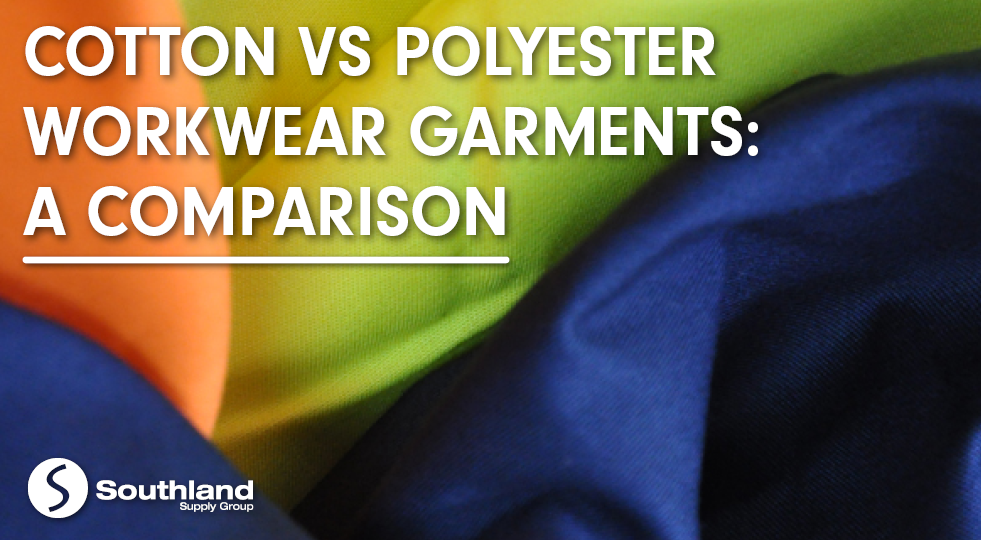
When shopping for safety workwear, it is important to pay close attention to the fabric/material each garment is made from. Each fabric offers unique properties, with some being more comfortable, technically superior, and more durable than others. Before purchasing your safety gear and workwear, it’s vital to consider your profession to ensure that your safety workwear will be able to withstand the rigors of your daily routine. For instance, if you work on an oil rig, you may require a workwear that’s made from flame retardant fabric. If you are working around heavy machinery, you will need a thicker fabric that can take some abuse yet still provide protection and look the part.
Below are 2 of the most common types of fabric used in safety workwear.
Polyester Safety Workwear
Polyester is a man-made fiber that is manufactured from petroleum-based products. Sportswear is almost exclusively made from different types of polyester, but it is also used for many types of safety workwear. It is one of the most popular choice of garments due to its moisture wicking ability, making it a great choice for busy tradies and those who work outdoors in the summer. Polyester holds its colour better than natural fabrics such as cotton, and it is also less affected by shrinkage. Moreover, polyester fabric is also very lightweight and highly durable.
Downsides of polyester include its slightly rough finish when compared to cotton, and also its tendency to smell when worn in sweaty conditions. Polyester is often blended with cotton to provide a good balance between comfort, durability and high-performance.
Cotton Safety Workwear
While polyester is a man-made synthetic fiber, cotton is 100% natural. Cotton, as a raw material, is plant-based and grows on plants that are annually harvested. As a fabric, it is mostly known for its comfort and durability, which means that it allows considerable moisture evaporation and air flow, a very necessary quality for workwear clothes.
Downsides of cotton include its tendency to shrink when washed and dried at industrial temperatures, and also its tendency to fade over time when compared to polyester.
Checking the Fabric Weight of Workwear
Aside from checking the type of fabric, it is also a great idea to check the fabric weight of the garment you plan to purchase. All safety workwear is required to conform with Australian Standards, and you will notice that workwear usually comes in three different weights:
Lightweight – (e.g polyester and cotton blend polo shirts, lightweight cotton shirts etc)
Midweight – (e.g. cargo pants, fleeces, etc)
Heavyweight – (e.g. thick fleece tops)
It is important to think about the type of work you will be performing and the weather conditions where you will be working prior to investing in new workwear. Choosing the right weight of the fabric and the right features will ensure you and your team remains comfortable and protected all year round.
Southland Supply Group
Getting the right safety workwear can make a big difference, ensuring you perform at your best whilst enjoying the utmost comfort and protection.
Southland is stocking a wide range of quality safety and workwear supplies. Whatever your trade, rest assured we have the right product for the task. We invite you to browse our website today and check out our complete range, and if you have any questions please don’t hesitate to get in touch with us on 1800 77 22 91.
